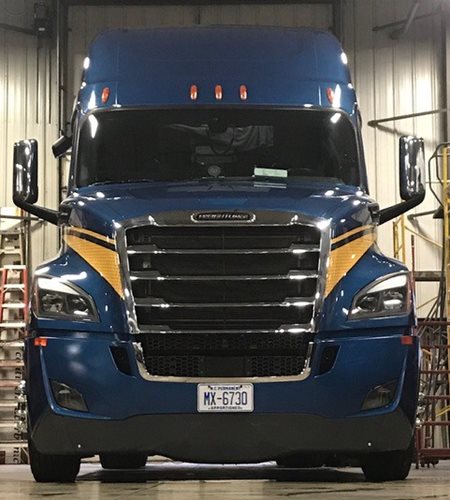
In February of 2018, I started the 70+/10 project. The goal has been to run the speed limit up to 75 mph when safe to do so and achieve 10 mpg. The project is ongoing, and my fuel mileage during this period has been 9.507. New Blue’s fuel mileage before the project started was an average of 10.058, which gives my Cascadia a lifetime fuel mileage average of 9.697.
A large portion of my run is through Texas, where the speed limit is usually posted at 75 mph. An interesting take away from my 70+/10 project has been how much things have changed over the years, mechanically and aerodynamically. There is a figure that is still thrown around today that you will lose 1/10 an mpg for each mph speed increase. The 1/10th was always a flawed number to begin with as aerodynamic impact on drag is on a bell curve, not a straight line. Every mph increase in speed, in reality, has a greater impact than the one that proceeded it. One of the observations during 70+/10 project has been that I can still average good fuel economy numbers at speeds up to 72 mph. That final three mph up to 75 mph has proven to be the area that is holding me back from averaging above ten mpg.
It was interesting as I was reviewing the performance of my Cascadia with another owner- operator friend of mine over dinner. He was sharing with me that he thought I would never improve my fuel mileage with this Cascadia over my previous Cascadia because this one is a 6 X 4 driving both axles vs the last one being a 6 X 2 having less parasitic loss. The reason for being able to still increase my fuel mileage, despite going from a 6 X 2 to a 6 X 4 drive axle configure, was the mechanical and aerodynamic enhancements made to the New Cascadia vs. the old Cascadia. One of these enhancements is the 2.16 rear axle ratio with Detroit exclusive Axle Lube Management (ALM). This one feature, ALM, brought the efficiency of the 6 X 4 rear axle configuration within 1.5 percent of the efficiency of a 6 X 2 without any of the inherent disadvantages associated with a 6 X 2 rear axle configuration. In addition to ALM the 2.16 rear axle ratio is not available in the 23,000 lb. axle used in a 6 X 2 rear axle configuration.
As I explained to my owner-operator friend, the gear ratio, along with active lube management and the myriad of aerodynamic improvements all combined, were more than enough to overcome the advantages my previous Cascadia had with only one drive axle.
A feature on the comfort side I never thought I would appreciate is the Cascadia’s Drivers Loft. My attitude has always been, get done driving, do paperwork, eat, lay down, and go to sleep. Did I need a table and chairs in a truck? Did I think it might be nice? Now that I have the Cascadia with the Drivers Loft, I have learned how much I actually use it. Every day I put the bed away and use the table; it takes me about thirty seconds to switch back and forth. The table is nice to do my paperwork, instead of using the steering wheel or sitting in bed, prepare and eat meals, relax, or even visit with another driver.
In summary, could I live without having the Drivers Loft? Yes, as I survived back in the day with a small cabover truck sleeper. The real question is, would I want to? No, as I have come to appreciate this convenience as the sleeper feels like a home away from home.
In the end, it still amazes me how far my new Cascadia has advanced over my previous Cascadia in nearly every category from efficiency, comfort, livability, handling, and overall good looks.